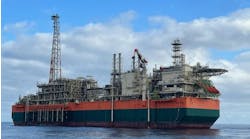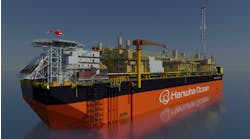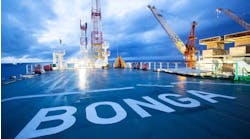INTERNATIONAL REPORT: Operator cash flow, larger budgets awakening interest in global exploration
Offshore's annual International Report, appearing here and on the following pages, was written and compiled byJudy Maksoud, International Editor. The report includes statistical material provided by listed sources.
Earnings for most major and independent oil and gas producers were phenomenal last year, with many companies reporting record revenues. The expected increase in exploration and production for 2001 reflects a widespread consensus in the industry that a new era of exploration is dawning.
As 2001 rolled through the first calendar quarter, a distinct interest in acreage acquisition and exploratory drilling was encouraged by more-than-adequate internal cash flow. But growth in the coming year will not focus just on a few selected geographical areas. Instead, many completely new areas of the globe will see a drill bit for the first time.
Drilling companies have begun upgrading (and some building) their fleets in preparation for the expected demand for rigs, particularly those capable of drilling in deepwater. Rig forecasts from Bassoe Offshore Consultants Ltd in the UK project a worldwide offshore rig need in the coming year that will likely exceed available supply in areas such as the Asia/Pacific region. There may be few idle rigs around the world.
Tight rig supply
A global shift toward deepwater development will continue into the coming year. Analysts agree that the bulk of this activity will be concentrated off West Africa and Brazil, and in the Gulf of Mexico, and drillers are readying rigs for long-term deepwater contracts.
Deepwater rig availability continues to be an issue, and could grow more intense in the coming year. Even with a surge in building, few deepwater rigs will be available for industry demand over the coming two years. And the scarcity of drilling equipment is not the only concern.
Oil and gas operators have voiced apprehension about the lack of oilfield service equipment capacity and the dearth of qualified personnel. The hope is that during this upsurge in activity, companies will recruit personnel that can be retained if slack oil and gas prices force the industry into a retraction. Planning of this nature has not been an industry strength, and some producers and service companies are trying to alter the pattern of hiring and layoff in planning for the future.
New discoveries around the world, from the Caspian Sea to West Africa, indicate that potential reserves are plentiful, but a fair amount of activity will continue to take place in mature areas such as the North Sea. This re-development should expand workover and replacement well activity, which will simply add to the demand for drilling and well service capability.
Gas exploration
The natural gas market will also see unprecedented development. Historically, gas utilization has not been optimal, with excessive flaring common. With the demand for gas increasing, along with concerns about diminishing energy reserves, a higher percentage of gas will be recovered in the coming years.
Legislation has already been introduced in a number of countries to cut back on flaring, and companies are targeting more gas fields for development. Gas use is up in many countries that are trying to either cut back on oil imports or increase the amount of oil they can export. In addition, pipelines are either being planned or built in practically every area of the world in order to move gas more expediently from the field.
Companies are also looking into ways to facilitate gas production. Shell, Moss Maritime, and Bouygues Offshore have all announced successful completion of development programs for floating LNG facilities, concepts that could take gas from remote wells to distribution networks without pipelines.
Seismic picking up
A leading edge sign of increased exploration and development is always the volume of seismic activity underway, and there are signs the number of new contracts for seismic surveys is increasing.
In Europe, most frontier exploration focus will still be along the Northwest European deepwater Atlantic margin. In the more mature areas of the UK North Sea, there will be a bias toward 4D projects, with more than a dozen fields singled out for 2001.
In addition to activity in established basins, geophysical surveys will be conducted in areas of the world that have never experienced seismic analysis previously. The island of São Tomé and Príncipe offshore West Africa will see seismic activity for the first time, and the first significant offshore 3D data will be gathered off Morocco. Madagascar will also see offshore seismic activity this year.


